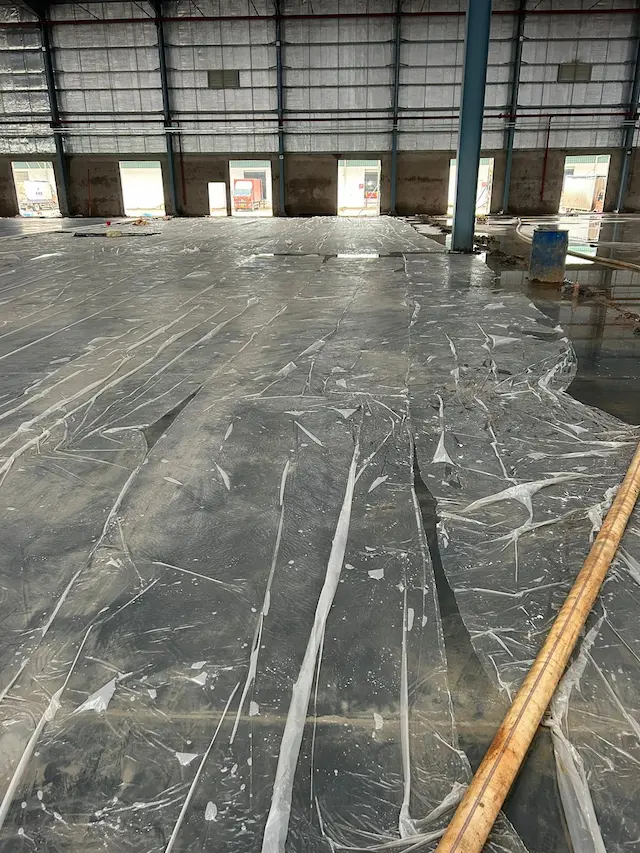
Importance of Curing for Concrete Floor Slabs
In construction, achieving strong and durable concrete floors is a top priority. But in order to make this happen, an essential process called curing comes into play. Curing is the process of locking moisture of fresh concrete, it plays an important role in the strength development and durability of concrete. Curing takes place immediately after concrete placing and finishing and involves maintenance of desired moisture and temperature conditions, both at depth and near the surface, for extended periods of time. Properly cured concrete has an adequate amount of moisture for continued hydration and development of strength, volume stability, resistance to freezing and thawing, and abrasion and scaling resistance.
Advantages of Curing:
• It triggers a chemical reaction between concrete and water, leading to increased strength and durability. • As one of the crucial construction processes, curing prevents cracks from forming in the floor slab, ensuring a long-lasting and robust concrete surface. • Curing ensures proper hydration and strength of concrete gained in a period of 10-14 days for fm-2 floors.
Types of Curing
There are several forms of Curing, a few of them are mentioned below:
• Ponding.
• Spraying.
• Fogging
• Cover with a plastic sheet
• Curing Compound
• Steam Curing
• Covering the floor slab with wet jute cloth.
- Ponding:
Ponding means providing a thin layer of water on the top of the concrete surface. This method is used for curing slabs. Bands of mortar are spread around the perimeter of the slab, and the portion in between is kept filled with a thin layer of water.
- Spraying:
Water is continuously sprayed on the surface of the exposed concrete floor slab. However, in hot and dry climates, water tends to evaporate quickly. To address this, the surface is covered with a wet jute cloth to retain moisture.
- Fogging:
Instead of continuous spraying, fogging creates a continuous moisture environment on the concrete floor slab, promoting effective curing.
- Covering the surface with a plastic sheet:
By covering the freshly cast slab with a plastic sheet, evaporative losses are prevented, ensuring proper and consistent curing.
- Curing compound:
A special liquid compound is brushed onto the concrete surface, forming a waterproof film that prevents moisture escape and aids in curing.
- Steam curing:
Used primarily for precast RCC members, this method involves placing the members in a steam chamber, providing rapid and efficient curing.
Each of these curing methods plays a crucial role in maintaining the strength, durability, and overall quality of concrete floor slabs.
Curing is a crucial aspect of constructing concrete floor slabs that cannot be overlooked. Properly curing concrete ensures its strength, durability, and resistance to various factors that may cause damage over time. By employing appropriate curing methods, the concrete floor slab can achieve optimal strength, durability, and longevity, ensuring it stands the test of time and maintains its structural integrity under various conditions. So, when it comes to concrete floor slabs, remember that proper curing is the key to strong and durable concrete floors.
